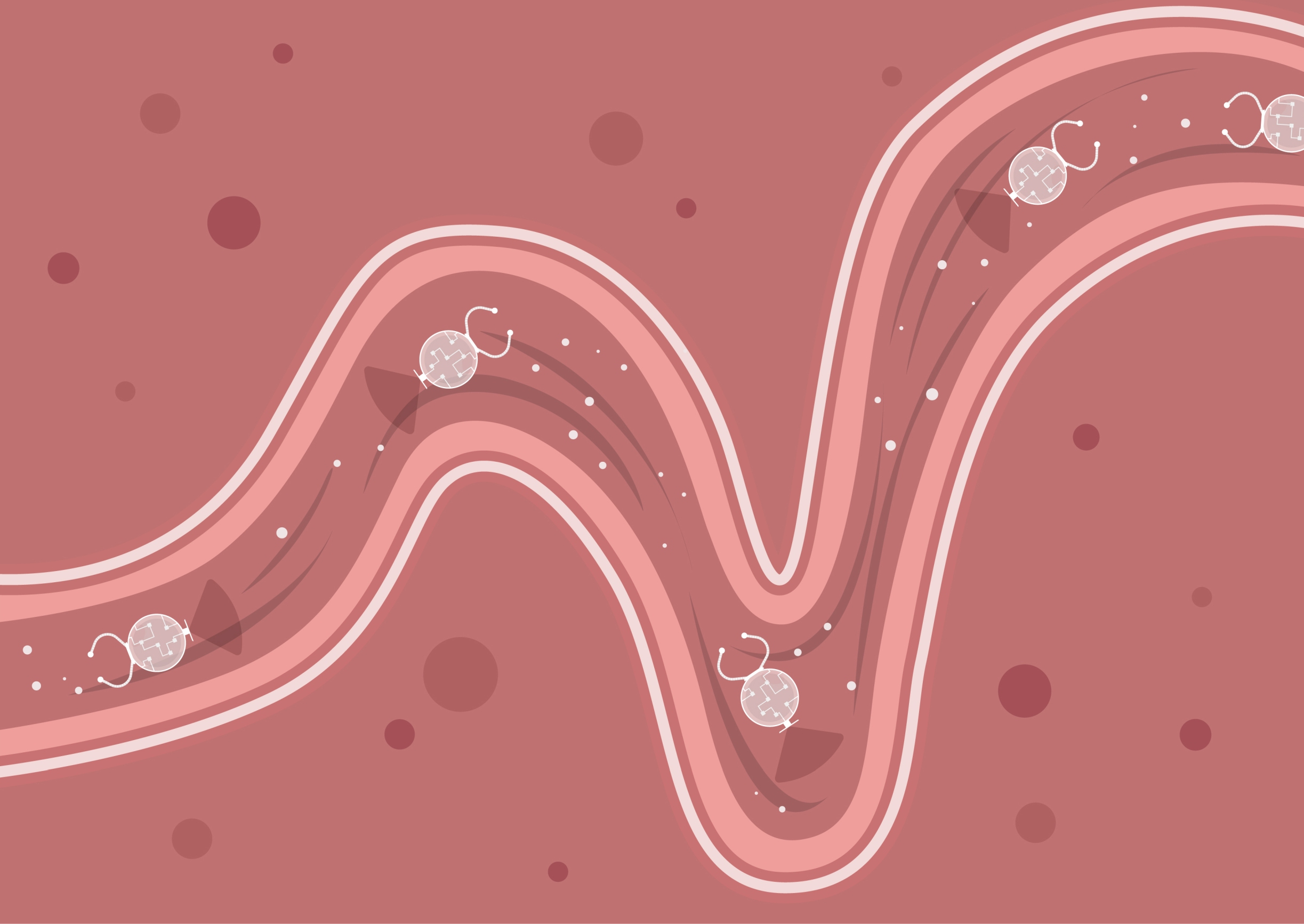In conventional endoscopic examinations, a slender endoscope is inserted into the patient’s body for doctors’ clear observation of organs. It is generally used for inspections in the digestive tract. However, no matter how small and flexible the endoscope is, it can hardly reach narrow and tortuous lumens such as tiny branches of bile ducts, pancreatic ducts, the bronchial tree and the smaller branches of the urinary system.
A multidisciplinary research team from The Chinese University of Hong Kong (CUHK) led by Professor Li Zhang, Associate Professor from the Department of Mechanical and Automation Engineering, Professor Joseph Jao-yiu Sung, CUHK Emeritus Professor of Medicine, and Professor Philip Way-yan Chiu, Director of Chow Yuk Ho Technology Centre for Innovative Medicine and CUHK Jockey Club Minimally Invasive Surgical Skills Centre, has recently developed biohybrid soft microrobots with an endoscopy-assisted magnetic navigation strategy for rapid endoluminal delivery. With endoscopy-assisted magnetic actuation with a dual imaging system (EMADIS), the microrobots can swiftly navigate into tiny and tortuous lumens under real-time in vivo tracking by clinical imaging techniques. The technology has the potential to treat various diseases with minimally invasive treatment in tiny and tortuous cavities where conventional medical devices can hardly reach, thus tackling current challenges that the existing medical technology can rarely address.
Microrobotic platform that integrates endoscope, microrobots and magnetic actuation system

Scientists have been devoting much effort to researching the biomedical applications of microrobots while combating the in vivo challenges, especially on safety, adaptivity in a dynamic physiological environment, real-time tracking and remote control.

The biohybrid soft microrobots are composed of stem cells (~98%) and a tiny portion of magnetic particles (~2%). The stem cells can be harvested from the patient, which minimises possible immune responses. The ball-like microrobot has a diameter of 100 to 500 µm, adjusted through manipulating the number of cells. Its nature, which is as soft and highly elastic as human brain tissues, enables it to pass through complex environments, by self-alternating the shape when navigating around the deep and narrow spaces inside the body.
How does it actually work inside the body? Professor Zhang explained, “Let’s take the application in bile ducts as an example. We will first deploy the microrobots through the endoscope to the small intestine. The endoscope offers an express lane for the microrobots to rapidly pass through different biological barriers in organs and tissues and to avoid direct contact with the complex fluidic environments. The microrobots will then be delivered into the bile duct by magnetic actuation, under tracking by the endoscopic view (reachable and visible regions) and ultrasound imaging (invisible regions by endoscopic view). In this way, the EMADIS enables a high-precision and time-saving therapeutic intervention towards a deeper and farther destination.”
Envisaging a safety application in the human body with high clinical potential

The research team is currently working on translating the technology into different in vivo applications. These include the targeted delivery of therapeutic drugs deep inside the body, which can minimise the side effect of drugs with high dosage circulating in the body. In terms of treating gastrointestinal diseases, the biohybrid soft microrobots also have high potential in treating bile duct cancer, intrahepatic duct stones in narrow lumens, inflammatory bowel disease and benign biliary strictures. The next step for the team is to conduct animal trials to validate its safety and efficacy.
Professor Chiu pinpointed that, “The current bile duct examination is still restricted by the size of the endoscope and surgical devices. Incision of muscles is required. But that may cause bleeding and complications such as perforation and pancreatitis. It is also difficult to access the intrahepatic duct for intervention. We envision that the microrobots can be used in medical treatments and examinations like early identification of cancers and pathological changes. This technology can greatly improve efficiency of diagnosis and therapy, and will reduce the chance of complications.”
Professor Sung specified, “The microrobots have extended the reach of endoscopy to human organ compartments that the conventional endoscopes can never reach, including the smaller branches of the urinary system such as renal calyces and the prostate. It offers unprecedented diagnostic and therapeutic opportunities with magnetic navigation. It is reckoned to be safe and the potential of clinical application is huge.”










